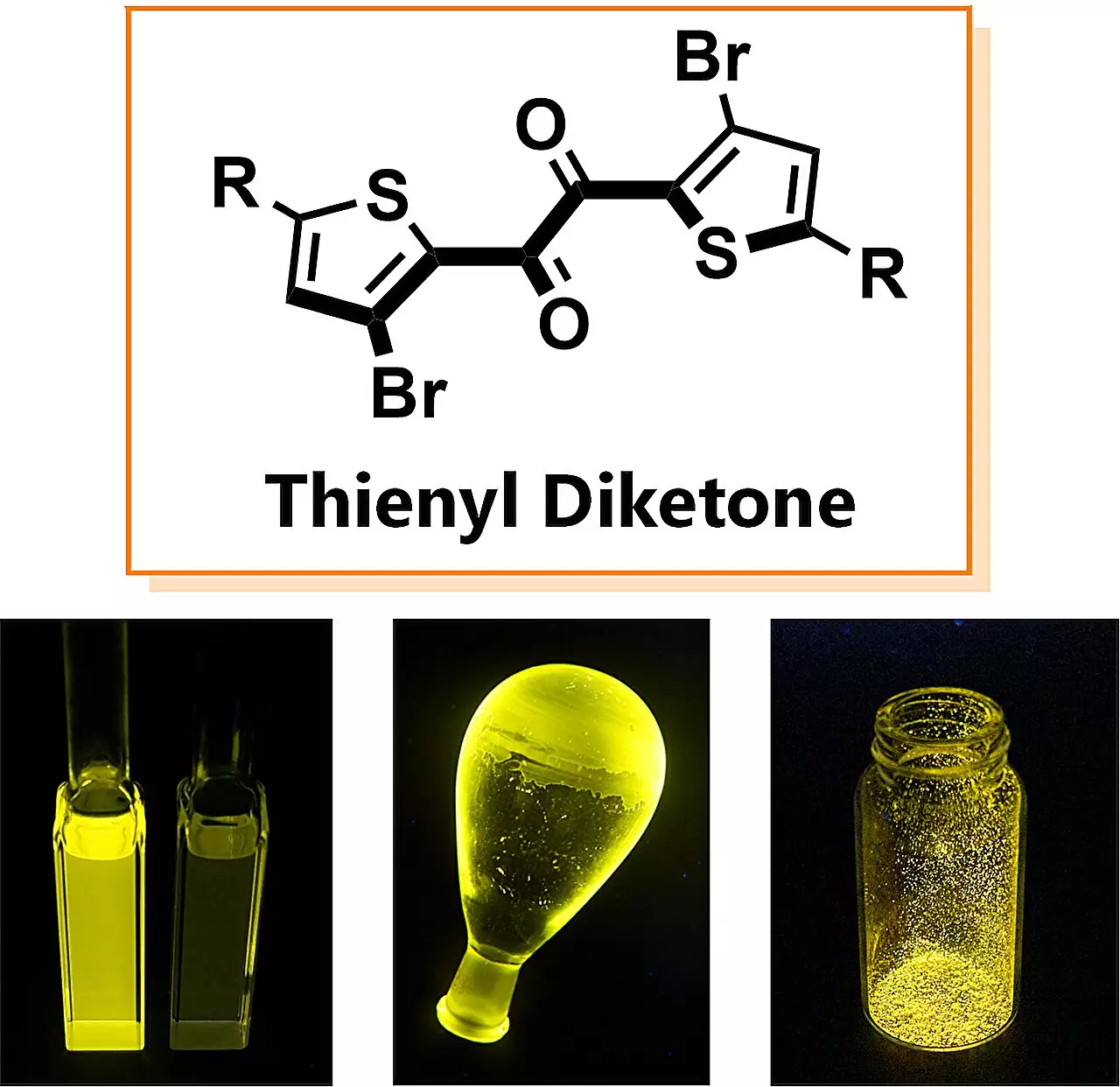Recent revelations from a research team at Osaka University have illuminated the pathway to groundbreaking progress in organic phosphorescence with the discovery of thienyl diketone. This innovative organic molecule has demonstrated a remarkable phosphorescent efficiency that eclipses traditional materials by over tenfold, marking a pivotal shift in the capabilities of organic light-emitting technologies. Published in the journal *Chemical Science*, this research presents not just a scientific curiosity but a beacon of hope for various applications, from entertainment technology to medical diagnostics.
Challenging the Status Quo
Historically, the quest for efficient phosphorescence has been intimately tied to the limitations imposed by rare metals such as iridium and platinum. The reliance on these elements has stifled innovation. Phosphorescence, occurring through a molecule’s transition from a high-energy to a low-energy state, often falls prey to non-radiative processes that dissipate energy as heat—thereby diminishing its efficiency. Prior research endeavored to enhance organic phosphorescent materials by integrating certain structural features, yet none achieved the velocity or efficiency that thienyl diketone has exhibited.
It is both intriguing and commendable that the researchers stumbled upon this molecule almost by accident. Yosuke Tani, the senior author, noted the initial confusion over the molecule’s superior performance until a deeper understanding of its mechanism was achieved. This serendipitous discovery not only underscores the unpredictability of scientific breakthroughs but also highlights how such moments can radically shift paradigms in understanding phosphorescent materials.
Redefining Possibilities in Technology
The implications of this discovery extend far beyond mere academic novelty. The newfound efficacy of thienyl diketone heralds a significant leap for the development of organic light-emitting diodes (OLEDs), a technology that is at the forefront of modern visual displays. As the market increasingly demands more sustainable and efficient solutions, the potential for thienyl diketone to eliminate dependence on rare metals could transform product development cycles and reduce environmental impact.
Moreover, advancements in phosphorescent materials hold promise for innovative medical diagnostics, where the speed and efficiency of light absorption and emission can lead to earlier and more accurate detection of diseases. The research team’s assertion that this molecule could outpace and replace metal-based counterparts is not just optimistic but essential for a future that prioritizes sustainability and efficiency across all technological applications.
A Call for Continued Exploration
Despite the promising findings, Dr. Tani’s reflection on the need for further exploration echoes a broader sentiment in the scientific community. Such enthusiasm for discovery is critical; while the mechanism behind thienyl diketone’s performance outshines previous organic materials, the journey does not end here. The expansive potential applications—from consumer electronics to healthcare—demand continued investment in research and experimentation.
As the researchers venture forward, it is clear that this discovery is a stepping stone toward a more sustainable and innovative future in materials science. Thienyl diketone is not just a remarkable molecule but a symbol of how serendipity, combined with rigorous inquiry, can unleash hidden possibilities in technology. The future may very well be illuminated by the brilliance of organic materials, reshaping our approach to light-based applications in everyday life.

